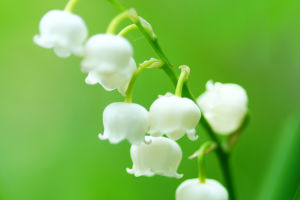The petals of hydrangea are dense and compact, and it is beautiful and atmospheric to have a pot of hydrangea at home.
But often people ask the question, why their hydrangea growth is particularly poor and has not loved to bloom, what is the reason?
There are several reasons for the poor growth of hydrangea and the difficulty in flowering, let's understand.
1. The pot can not be too small
If you look carefully you will find that the ground-planted hydrangea will always be more flowering than the potted hydrangea, with good growth, but this is a problem of root system development is limited.
The root system of hydrangea is fine, but the number of roots is large and needs enough space to extend smoothly in all directions.
If the pot is relatively small, the development of the root system will be hindered, thus being unable to absorb more nutrients to supply the plant, which eventually affects the growth of the hydrangea.
So when planting hydrangea, try to choose a larger pot, the pot also needs to have the characteristics of ventilation, and drainage.
2. Avoid direct sunlight
Many people think that the hydrangea's flowering period is in summer, and should have strong sun tolerance this idea is not right.
Hydrangea is not sun-tolerant, if you put it in the sun for a long time, it will seriously burn the leaves and even shorten the flowering period, reducing the overall ornamental value.
After entering summer, shade the hydrangea. You can use a shade net to block the sunlight at noon time, or you can directly move the hydrangea to a semi-shady and ventilated position, don't let the strong light shine directly on the hydrangea.
3. Do not apply too much nitrogen fertilizer
Some people will apply a lot of nitrogen fertilizer to speed up the growth of hydrangea, and the excessive use of nitrogen fertilizer will only make the hydrangea grow, and eventually cannot bloom smoothly.
During the growth period of hydrangea, you can apply well-rotted cake fertilizer every half month or so to increase the nutrient content in the soil.
When the hydrangea is about to bloom, apply more phosphorus and potassium fertilizer, such as foliar spraying potassium dihydrogen phosphate fertilizer solution, to promote the differentiation of flower buds.
4. Do not water too much
Hydrangea has a certain drought tolerance and usually does not need regular watering, if uncontrolled watering, the soil waterlogging situation, will hinder the root breathing, and even cause root rot, which is not conducive to the growth of hydrangea.
Wait until the soil is completely dry before watering each time. After watering, increase ventilation so that the water can evaporate from the soil smoothly.
It should be noted that in summer, due to the high temperature, when watering hydrangea, try to choose in the evening, so that the water temperature does not rise and scald the roots.
Avoid these problems and you will have a healthy hydrangea.


